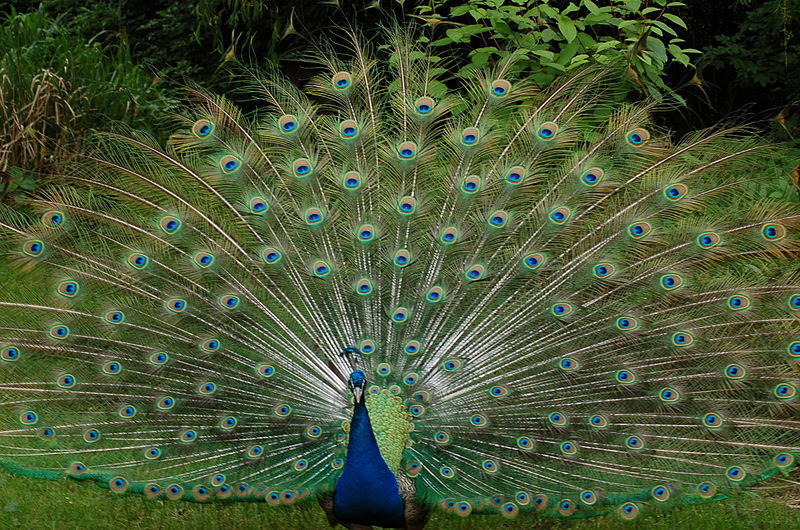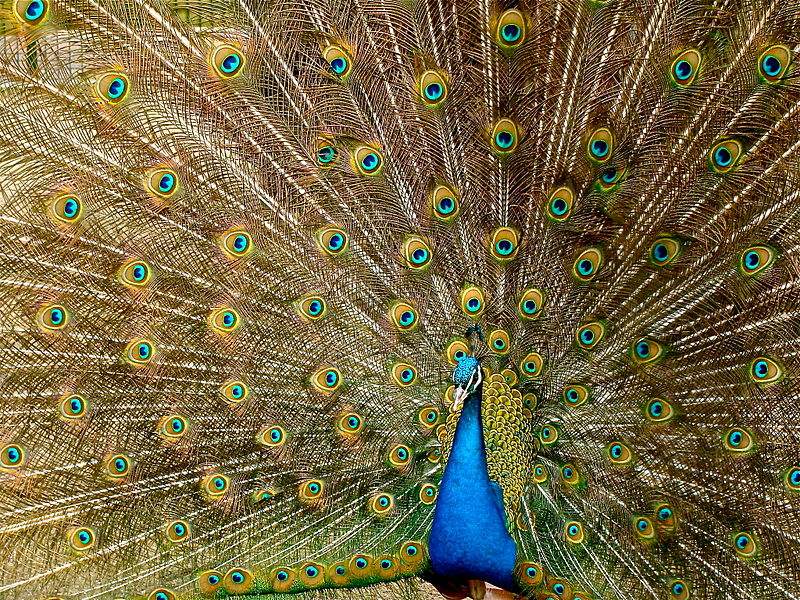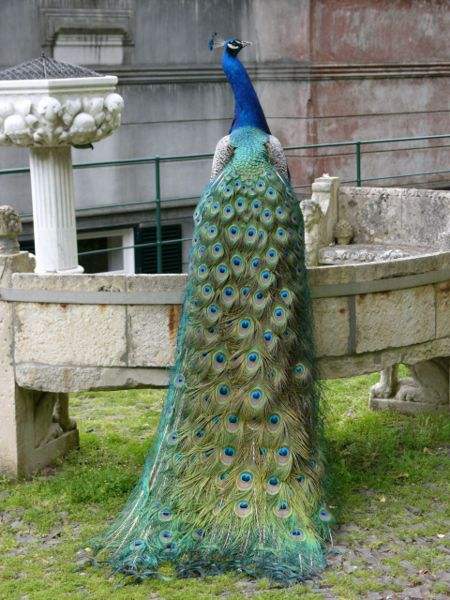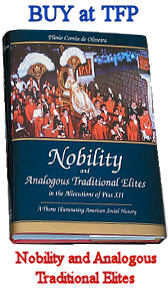The peacock acts according to its instincts, but these instincts were granted it by God.
It was God who gave it that beautiful tail, and the instinct to unfold it, fan it out, and to walk showing it off. Everything takes place by means of the pure Will of God.
The first impression, when a peacock fans out its tail, is one of a multi-coloredness, one of such an intermixture of colors, dazzlingly rich, yet pleasing, orderly and attractive, that a person feels a bit taken aback, in the sense that it is so, so beautiful, that his capacity to appreciate beauty is assaulted and somewhat humbled.
Afterwards, in a second phase, after having absorbed more or less the general aspect, the person begins to take in [synonym for “scrutinize”] the details, and is taken by another impression, which, ultimately, is the first impression made more explicit.
One sees semicircles made by the different colored plumes, with something silken about them, something of the sheen of silk or the glistening of crystal or precious stones.
In order to understand the peacock, it is necessary to imagine a precious stone with silken qualities, or silk with the qualities of a precious stone.
In following, within [these semicircles], there are secondary colors which gather and revolve around one another, and which, in gazing at each other, are amazed.
Suddenly, the peacock closes its tail and tranquilly walks to another place, while dragging that tail made up as if of precious stones on the ground behind it (…) That tail drawn across the ground is so superior that nothing of the ground, no dirtiness in the least, adheres to it.
A person remains enthused, and his gazes falls no longer upon the tail of the peacock, but rather its breast. It is an interplay of bluish-green, coruscant with beauty, and with the distinction proper to a great lady.
Its turns its head to the rear and draws it back a bit thusly, looking down from above as if saying: “Reality, how dare you draw so near to my gaze! Depart, for I can see you just as well from a distance!”
One is astonished with all this. Also, the peacock sports a topknot, or panache, of feathers, which is in no way necessary to its beauty, yet which bears the charm of that which is superfluous.
At a certain moment, the peacock reveals its secret; this is when it raises its topknot, for with this its plenitude in being what it is, that which explains all else, may be seen.
Because the peacock is somewhat enigmatic until the moment it raises its topknot.
One may go to see the peacock a number of times, day after day, until the peacock becomes banal. When it has become banal, it has become a part of us, as if encrusted into our soul, for it is proper of admiration to be acquisitive.
[Nobility.org Translation]











